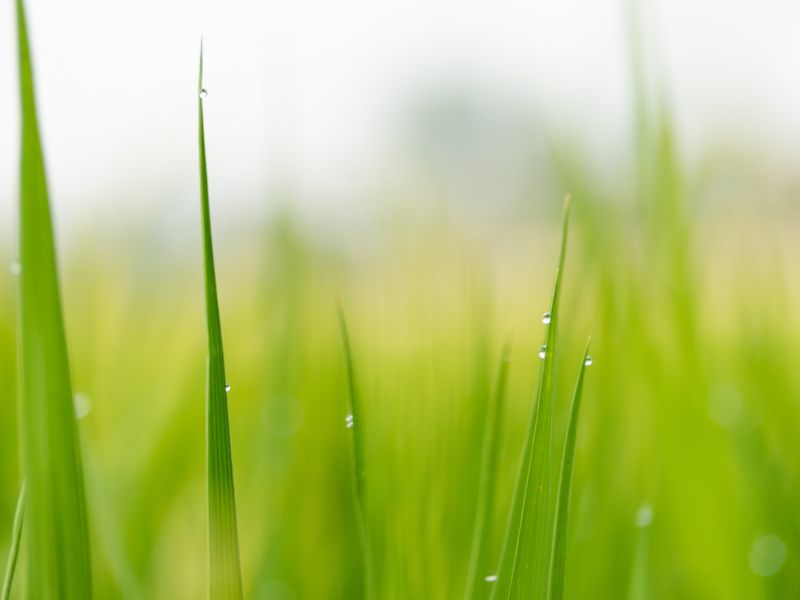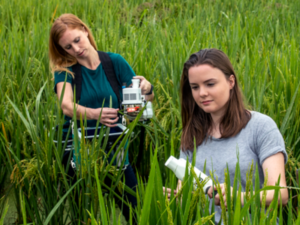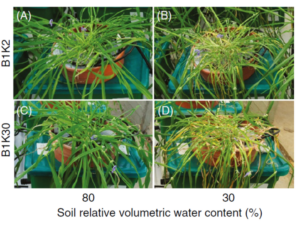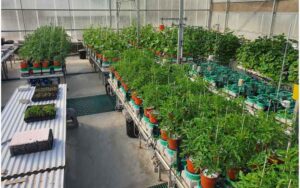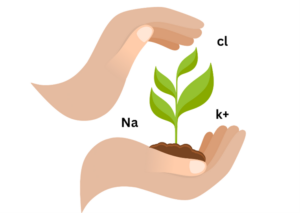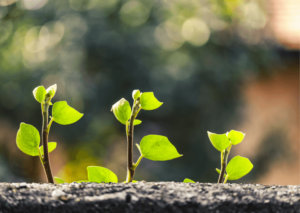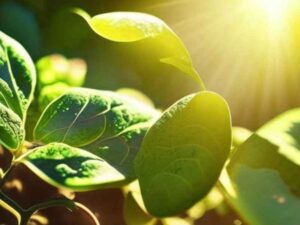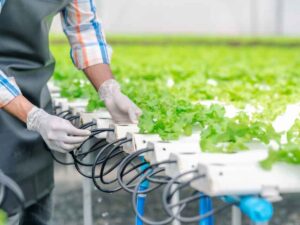Plant transpiration is a crucial biological process through which water is absorbed by plants from the soil, transported through the plant, and released into the atmosphere as water vapor through small pores called stomata. this natural phenomenon plays a pivotal role in plant survival, nutrient uptake, and overall environmental balance. in this comprehensive blog, we will delve into the intricacies of plant transpiration, its mechanisms, significance, and its connection to related subjects.
the mechanism of plant transpiration is a fascinating process that involves the movement of water from the soil to the atmosphere through various parts of the plant. this intricate mechanism is driven by several key factors and relies on specialized plant structures and tissues. let’s explore the mechanism of plant transpiration in more detail:
root water uptake: the process of plant transpiration begins with water uptake by the roots from the soil. plant roots absorb water along with dissolved minerals and nutrients through tiny root hairs, which significantly increase the surface area for water absorption. this water uptake is facilitated by osmosis, as the concentration of water in the soil is higher than that inside the root cells.
water transport through xylem: once water is taken up by the roots, it is transported upward through the plant by the xylem, which is a specialized vascular tissue. the xylem consists of hollow, elongated cells that form continuous tubes from the roots to the leaves. these cells are strengthened by lignin, providing structural support to the plant and preventing collapse of the water-conducting vessels.
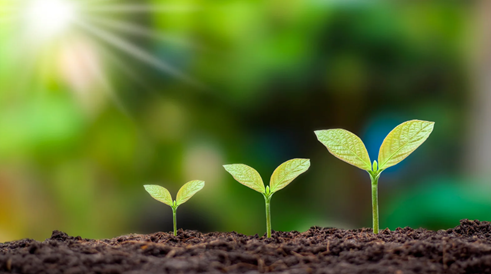
Cohesion-Tension Theory: The cohesion-tension theory is a key principle that explains the movement of water through the xylem. According to this theory, water molecules in the xylem exhibit cohesive properties, meaning they tend to stick together. As water is lost from the leaves during transpiration, it creates a negative pressure or tension in the xylem, pulling water upward from the roots. The cohesive forces between water molecules maintain a continuous column of water from the roots to the leaves.
Adhesion to Xylem Vessel Walls: Along with cohesion, water molecules also adhere to the inner walls of the xylem vessels. This adhesion helps counteract the force of gravity and prevents the water column from breaking under tension. Adhesion enables water to be pulled upward against gravity, ensuring that water reaches even the highest parts of the plant, such as the leaves and flowers.
Photosynthesis Regulation: Stomata, as mentioned earlier, are microscopic pores found on the surface of leaves and stems. These specialized structures play a crucial role in regulating the rate of transpiration. Stomata consist of two specialized guard cells that can open and close the pore. The opening and closing of stomata are controlled by various environmental factors, such as light intensity, temperature, humidity, and carbon dioxide levels.
What is the Role of Stomata in Controlling Transpiration?
Stomata are tiny openings on the surfaces of leaves, formed by two guard cells. Each guard cell contains many sensors that measure various elements in the environment like light, humidity, temperature, and carbon dioxide levels. These sensors help the stomata decide when to open to take in CO₂ for photosynthesis and when to close to protect the plant from losing too much water. By responding to conditions like wind and soil moisture as well, the guard cells regulate transpiration effectively, ensuring the plant maintains a healthy balance between gas exchange and water conservation.
Environmental Impact on Transpiration: The rate of transpiration is greatly influenced by environmental conditions. For example, high temperatures increase the rate of water evaporation from the leaves, leading to more significant water loss through transpiration. Wind can enhance transpiration by removing the water-saturated air surrounding the leaves, promoting a higher rate of water vapor diffusion. Conversely, high humidity levels reduce transpiration rates, as the surrounding air already contains substantial moisture.
Transpiration and Cooling Effect: An interesting aspect of plant transpiration is its cooling effect on the plant and its surroundings. As water is released through stomata, it absorbs heat energy from the plant and the leaf surfaces, providing a cooling effect similar to perspiration in animals. This process, known as evaporative cooling, helps plants regulate their temperature, especially during hot and sunny days, preventing overheating and heat-related stress.
The mechanism of plant transpiration is a remarkable feat of adaptation and survival. Through the cohesion-tension theory and the regulated opening and closing of stomata, plants efficiently transport water from the roots to the leaves and release it into the atmosphere. This essential process sustains plant life, enables photosynthesis, supports nutrient uptake, and contributes to climate regulation. Understanding the intricate mechanism of plant transpiration is crucial for agricultural practices, ecosystem management, and environmental conservation, as it plays a vital role in maintaining the delicate balance of our planet’s ecosystems.
How Plant transpiration relates to photosynthesis?
Photosynthesis is the process through which plants use sunlight, carbon dioxide, and water to produce glucose (a form of stored energy) and oxygen. Water is a critical component of photosynthesis, as it serves as the source of electrons needed to convert carbon dioxide and light energy into glucose. During transpiration, water is transported from the roots to the leaves through the xylem, reaching the mesophyll cells, where photosynthesis predominantly occurs.
Stomatal Control and Gas Exchange: The stomata, as mentioned earlier, play a crucial role in both transpiration and photosynthesis. During photosynthesis, stomata open to allow the entry of carbon dioxide, which is an essential raw material for the process. Carbon dioxide diffuses into the leaf’s interior, where it interacts with water and light in the chloroplasts to initiate the photosynthetic reactions.
Water Loss During Photosynthesis: Photosynthesis is not a perfectly efficient process, and some water is inevitably lost during this energy-conversion process. When stomata open for carbon dioxide uptake, water vapor also escapes through the stomata into the atmosphere. This water loss during photosynthesis is known as “transpiration pull,” and it helps maintain the flow of water from the roots to the leaves, sustaining the cohesion-tension mechanism in the xylem.
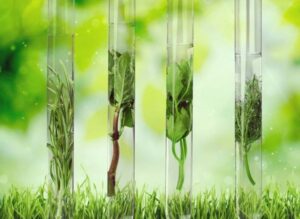
Balancing Transpiration and Photosynthesis: Plants must strike a delicate balance between transpiration and photosynthesis. On one hand, they need to open their stomata to allow carbon dioxide to enter for photosynthesis. On the other hand, they must control stomatal opening to minimize water loss, especially in hot and dry conditions, to prevent dehydration and wilting. The regulation of stomatal opening and closing is crucial to optimize both transpiration and photosynthesis in response to environmental conditions.
Environmental Impact on Transpiration and Photosynthesis: Environmental factors such as light intensity, temperature, humidity, and wind speed directly influence both transpiration and photosynthesis. Higher light intensity stimulates photosynthesis, leading to increased transpiration to supply the required water. However, in hot and dry conditions, high temperatures and low humidity can lead to excessive water loss through transpiration, potentially affecting photosynthetic efficiency and plant health.
Transpiration and photosynthesis are two essential processes that are intricately connected in plants. The movement of water during transpiration not only ensures the supply of water and nutrients to various parts of the plant but also facilitates the entry of carbon dioxide for photosynthesis. Photosynthesis, in turn, relies on water availability and transpiration to produce glucose and oxygen. This symbiotic relationship between transpiration and photosynthesis is critical for plant growth, ecosystem balance, carbon sequestration, and ultimately, the sustenance of life on Earth. Understanding these processes helps us appreciate the complexity of plant physiology and the delicate interplay between plants and their environment.
Mesophyll cells and transpiration
Mesophyll cells are a critical component of plant leaves and are responsible for several important functions, including photosynthesis, gas exchange, and water regulation. These cells are located between the upper and lower epidermis of leaves and play a pivotal role in the overall physiology of plants.
Mesophyll cells are characterized by their abundant chloroplasts, which contain the green pigment chlorophyll. Chlorophyll is essential for photosynthesis, the process by which plants convert light energy into chemical energy to produce glucose and other organic compounds. The high concentration of chloroplasts in mesophyll cells allows them to capture sunlight efficiently

Mesophyll cells also contribute to the regulation of water within the plant. During transpiration, water is drawn up from the roots through the xylem and is delivered to the mesophyll cells. The process of transpiration creates a negative pressure that helps pull water from the roots to the leaves. Once in the mesophyll cells, water moves into the air spaces within the leaf and eventually exits through the stomata as water vapor.
Another function of mesophyll cells is leaf cooling. As water evaporates from the surface of mesophyll cells into the air spaces, it carries away heat energy. This evaporative cooling helps prevent the leaf from overheating under intense sunlight.
In summary, mesophyll cells are central to the processes of photosynthesis, gas exchange, water regulation, and leaf cooling. Their strategic location within the leaf and their specialized structures, including chloroplasts, make them vital contributors to the overall health and functioning of plants.

Ecology and Plant Transpiration
Ecology is a scientific discipline that focuses on the interactions between organisms and their environment. Within this field, the study of plant transpiration is integral as it offers insights into how plants respond to environmental conditions and how their interactions shape ecosystems. Here’s how plant transpiration is deeply connected to ecology:
Microclimate Formation: Transpiring plants release water vapor into the air, increasing humidity in their immediate vicinity. This leads to the formation of microclimates around plants, affecting temperature, humidity, and air movement. These microclimates can influence the physiology and behavior of other organisms, such as insects and small animals, that live in close proximity to plants.

Species Interactions: Transpiration can influence the availability of water for other organisms within an ecosystem. Plants that transpire heavily might affect the water availability for neighboring plants or soil microorganisms. These interactions have cascading effects on species composition and competition within a community.
Plant-Soil-Atmosphere Continuum: Transpiration is a key component of the plant-soil-atmosphere continuum, a pathway through which water moves from the soil, through plant roots and stems, and into the atmosphere. This continuum plays a crucial role in regulating the movement of water, nutrients, and energy within ecosystems.
Water and Nutrient Cycling: Transpiration facilitates the movement of water and nutrients from the soil to the leaves, where they are used for photosynthesis and other metabolic processes. This movement is a vital aspect of nutrient cycling within ecosystems, influencing the availability of essential elements for various organisms.
Irrigation Management
Plant transpiration is closely tied to irrigation practices in agriculture. Effective irrigation management depends on understanding the water needs of crops and optimizing the timing and amount of water applied. By studying the transpiration rates of different crops, agricultural scientists can develop irrigation strategies that match the plants’ water requirements. This not only ensures optimal crop growth and yield but also conserves water resources by avoiding over-irrigation.
Climate science reveals that transpiration contributes to atmospheric moisture, influencing local and regional weather patterns. The exchange of water and energy between the land surface and atmosphere is affected by transpiration, shaping temperature, humidity, and wind patterns. This interaction underscores transpiration’s role in climate dynamics. In physiological ecology, understanding variations in transpiration rates helps elucidate how plants adapt to environmental conditions. These adaptations become crucial during water stress, such as drought, where plants adjust their transpiration rates as a survival strategy.
Transpiration and Precision Agriculture
In agriculture and crop science, plant transpiration is a cornerstone for efficient irrigation management. By deciphering the transpiration rates of different crops, experts can tailor irrigation schedules to match plants’ water needs. This optimizes crop growth, maximizes yields, and conserves water resources. The concept of water-use efficiency is central; crops with high water-use efficiency are preferred, especially in water-scarce regions. Genetic studies allow for the identification of traits that improve water-use efficiency and drought tolerance, aiding in the development of resilient crop varieties. Additionally, the study of stomatal regulation enables precise control of transpiration, enhancing water conservation while maintaining optimal photosynthesis and growth.
plant geneticists and breeders can capitalize on insights from transpiration studies. The identification of genes and physiological mechanisms that contribute to water-use efficiency and drought resilience aids in developing crop varieties capable of withstanding changing climate conditions. This aligns with the goals of precision agriculture, which uses technology to optimize resource use and increase crop productivity.
Drought and plant transpiration
Drought management and resilience are critical aspects of agriculture, especially in regions prone to water scarcity and changing climatic conditions. Plant transpiration plays a pivotal role in these efforts, as understanding how plants respond to water stress and adapting agricultural practices accordingly are key to maintaining crop productivity and food security.
During drought conditions, plants often close their stomata to reduce water loss through transpiration. This conserves water, but it also limits carbon dioxide uptake for photosynthesis.
In the contemporary landscape of scientific exploration, the assessment of plant reactions to the challenges of drought stress has been revolutionized by the emergence of sophisticated technology such as the PlantArray system that opened a new era for researchers of precision and comprehension in the study of plant responses to the ever-pressing challenges posed by drought stresses.
How can you measure plant transpiration?
The PlantArray system represents an advanced, high-capacity physiological phenotyping gravimetric platform equipped with multiple sensors. This system for plant phenotyping rapidly conducts thorough plant assessments by precisely measuring physiological traits such as plant transpiration, biomass vigor and stomatal conductance. These traits serve as excellent indicators of yield potential and have demonstrated strong correlations with actual field yield outcomes.
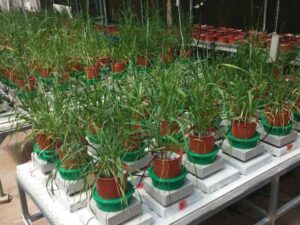
The system is already used by dozens and hundreds of researchers from all around he world for diverse purposes, whether for finding the most productive species or for simulating environmental stress situations.
Want to hear more information? We will be happy to explain and answer on any question that you may have. Simply click on the tab on the right side of the page and we will get back to you shortly!

